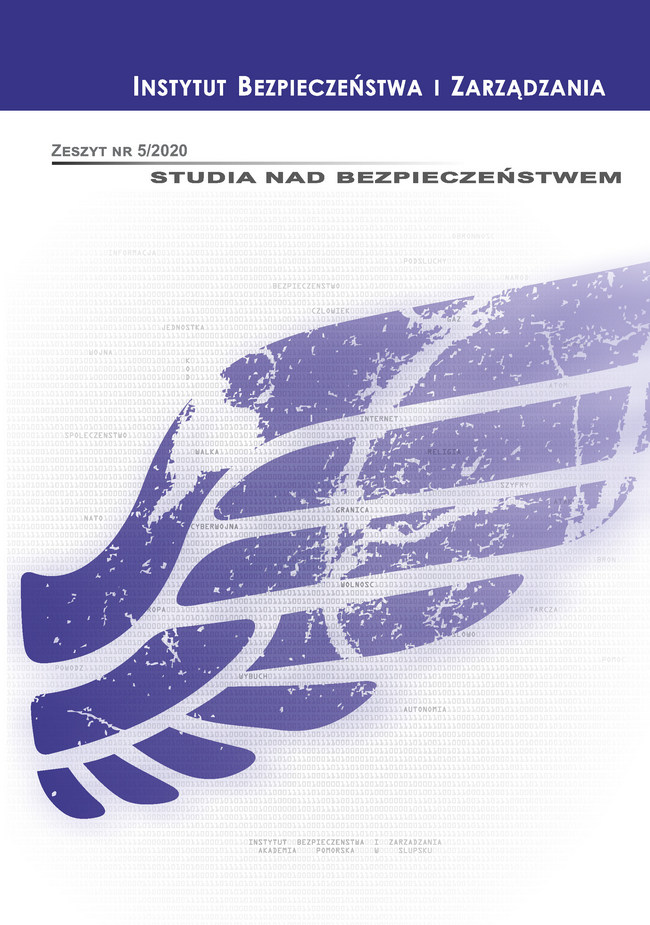Abstract
In most cases, migrants are not welcomed with open arms by the inhabitants of the countries where they arrive. By default, immigrants are viewed as “the source of the problem. ”It is obvious that most countries are more likely to accept highly qualified migrants than those who are poorly educated. The poor migrant “from the far south” is seen as a threat to welfare and public order. Currently, populist groups operating in Europe are gaining strength thanks to anti-immigration programmes and slogans. Poland, as a country that is a member of the European Union and is also responsible for a part of the external border of the EU, is of great importance in the migration process, accepting immigrants from Africa or the Middle East on its territory. As a country bordering on Russian-speaking countries, it is also “exposed” to the influx of immigrants from the east, for example from Ukraine or Belarus. This text is aimed at determining the level of the sense of danger among the inhabitants of Poland, in the context of the influx of people of other nationalities both on the territory of Poland and other European countries. The following question was adopted as a research problem to be solved in this text: What is the real degree of migration risk and are there any noticeable differences in the perception of the phenomenon by Poland and the European Union (if so, what)? In order to solve the problem, methods such as: critical analysis of the literature on the subject, analysis of statistical data, comparison, synthesis, abstraction, induction, deduction and inference were used. The conducted research has shown that the threat from immigrants from the eastern border is not great and does not diverge (from the point of view of the threat of crime and offences) from the level presented by Polish citizens. Attention is also paid to the great potential of migrants and the undoubted benefits resulting from their stay and work in the territory of the Republic of Poland.
References
Cabańska J., Uwarunkowania migracji ludności na jednolitym rynku europejskim na przykładzie nowych państw członkowskich Unii Europejskiej, rozprawa doktorska, Uniwersytet Ekonomiczny w Poznaniu, Poznań 2015.
Fehler W., Cebul K., Podgórzańska R., Migracje jako wyzwanie dla Unii Europejskiej i wybranych państw członkowskich, Warszawa 2017.
Górny A., Kaczmarczyk P., Uwarunkowania i mechanizmy migracji zarobkowych w świetle wybranych koncepcji teoretycznych, Instytut Studiów Społecznych, Uniwersytet Warszawski, „Studia Migracyjne”, nr 49, Warszawa 2003.
Lubiewski P., Nielegalna migracja. Przeciwdziałanie. Aspekty instytucjonalne i prawne. Część 2, Szczytno 2018.
Migracje i kryzys uchodźczy w Europie, E. Jaremczuk (red.), Poznań 2017.
Termiński B., Migracje ekonomiczne w prawie współpracy międzynarodowej. Wybrane aspekty instytucjonalno-prawne, Warszawa 2016.
The dictionary of human geography, D. Gregory (red.), Wiley–Blackwel, 2012.
Rozporządzenie (WE) nr 862/2007 Parlamentu Europejskiego i Rady z dnia 11 lipca 2007 r. w sprawie statystyk Wspólnoty z zakresu migracji i ochrony międzynarodowej oraz uchylające rozporządzenie Rady (EWG) nr 311/76 w sprawie zestawienia statystyk dotyczących pracowników cudzoziemców.
Dyrektywa Parlamentu Europejskiego i Rady 2008/115/WE z dnia 16 grudnia 2008 r. w sprawie wspólnych norm i procedur stosowanych przez państwa członkowskie w odniesieniu do powrotów nielegalnie przebywających obywateli państw trzecich (Dz.U. L 348 z 24.12.2008).
https://amnesty.org.pl/reforma-systemu-azylowego-ue-szansa-na-realne-zmiany-dla-uchodzcow/.
https://ec.europa.eu/poland/news/171115_migration_pl.
https://eur-lex.europa.eu/legal-content/PL/TXT/PDF/?uri=CELEX:52015DC0240&from=EN.
https://eur-lex.europa.eu/legal-content/PL/TXT/PDF/?uri=CELEX:52015DC0240&from=EN.
https://frontex.europa.eu/pl/.
https://op.europa.eu/webpub/com/factsheets/migration-crisis/en/.
https://op.europa.eu/webpub/eca/special-reports/refugees-turkey-27-2018/pl/.
https://udsc.gov.pl/ochrona-miedzynarodowa-w-2019-r/.
https://www.repozytorium.uni.wroc.pl/Content/62929/18_Agnieszka_Florczak.pdf.

This work is licensed under a Creative Commons Attribution 4.0 International License.
Copyright (c) 2021 Array

